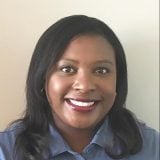Benefit From Fed Rate Hikes With a High-Yield Savings Account
The recent federal rate increases have been great for savers with high-yield savings accounts. It is not too late to take advantage.

Many, or all, of the products featured on this page are from our advertising partners who compensate us when you take certain actions on our website or click to take an action on their website. However, this does not influence our evaluations. Our opinions are our own. Here is a list of our partners and here's how we make money.
The recent Federal Reserve interest rate increases have been great for savers with high-yield accounts. The best annual percentage yields soared from 0.50% in early 2022 to more than 3% now.
But not everyone has been able to take advantage. According to a 2021 survey from the Federal Deposit Insurance Corp., nearly 6 million households had no one with a checking or savings account. There are several reasons why, but the important takeaway is that a lot of people aren’t benefitting from strong savings rates.
Even if you have a savings account, you could be missing out, especially if your account is at a big bank. It’s typical for large banks to pay as low as 0.01% savings APY, and many haven’t budged from that low rate this year.
As a customer, it’s not too late to change course. Here’s a look at what you might be missing out on and how to fix it.

With a high-yield savings account, your money earns money
A high-yield savings account, also called a high-interest savings account, is one that earns a lot more in interest than the average savings account. As of November 2022, the average savings account earned about a quarter of a percent. High-yield accounts pay many times more (see the 3% mentioned above). That amounts to an even starker difference if you do the math.
For example, if you were to keep $5,000 in an account that earned 0.25% APY for a year, you’d earn a little over $12 in interest. But if you kept that same amount in an account that earned 3% for a year, you’d earn over $150 in interest.

Member FDIC
Forbright Bank Growth Savings

4.25%
$0

Member FDIC
Axos ONE® Savings

4.66%
$1,500

Member FDIC
Varo Savings Account

5.00%
$0

Member FDIC
E*TRADE Premium Savings

4.00%
$0
Higher savings rates can help you keep up with inflation
Wonder why the APY on some accounts increased so quickly and so much this year? It’s because the Fed took steps to fight inflation by raising the federal funds rate, and that eventually affected savings accounts rates.
Those savings rates are a saving grace. They help shield your purchasing power against rising prices — at least a little bit.
And prices have been rising. According to the U.S. Bureau of Labor Statistics' consumer price index, which is used as a proxy for inflation, the year-over-year price increase for a select set of goods and services in November 2022 was 7.1%.
But if you are able to squirrel away savings into a high-yield account, you can help shield your purchasing power against rising prices because the interest you earn helps counteract those price increases.
At 3% APY, even the best high-yield accounts aren’t keeping up with the rate of inflation, but protecting some of your spending power is better than protecting none of it.
What to look for in a high-yield savings account
When searching for a high-yield account, look for one with strong rates (right now, that means 3% and above) and low or no monthly fees.
Don’t have a bank branch around the corner? No problem. Some of the best savings accounts tend to be online options, where you can do basic banking, such as mobile check deposit and automatic transfers, from your mobile device or computer. Online financial institutions tend to have competitive rates because they can take the money they save on overhead paying for branches and pass them on to customers in the form of higher rates.
What to do if you can’t open a savings account
Not everyone who applies for a savings account gets approved on their first try. The institution may not be able to confirm your identity. Or you may have a negative banking history, such as a past unpaid bank fee, that was reported to a consumer reporting agency, such as ChexSystems.
If it happens to you, remember that to maximize savings, you’re playing the long game. You can take steps today to get your consumer file on track, perhaps by opening a second chance bank account. If you establish a solid banking history for a few months or a year, you may be in a better position to open a regular account and shop around for a high-yield option.
Recent Fed rate increases have been a boon to savers with money in high-yield bank accounts. On the other hand, those without these accounts were less likely to see benefits. But savings rates are still strong, and it's not too late to open a high-yield account and start taking advantage.








